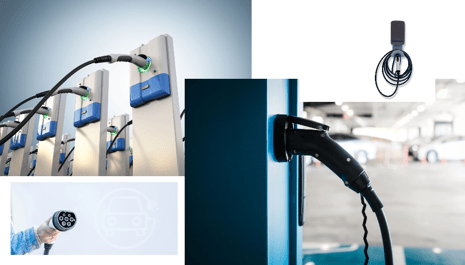

Electric Vehicle Charging Methods: Charge at Home
Electric vehicles (EVs) are rapidly gaining popularity as environmentally friendly and energy efficient transportation solutions. But charging these vehicles can still be a confusing process for most users. Charging EVs at home can be quite easy and efficient with the right equipment and knowledge.
In this guide, we will cover all the basics you need to know to charge your electric vehicles at home. We'll look at important topics such as the advantages of charging at home, how home chargers work and charging time.
What is Home Electric Vehicle Charging?
Home EV charging is the process of charging the battery of your electric vehicle from a standard electrical outlet at home or via a specially installed charger process. Most EV users charge their vehicle overnight, leaving it fully charged early in the morning. can take off with the battery.
Charging at home is often a more cost-effective and practical option. is seen as an option. Electric vehicle owners can use home chargers to charge their vehicles. They can recharge at any time and hit the road in the morning with fully charged batteries.
Charging Methods: Choosing a Home Charger
The most important piece of equipment that facilitates charging at home is the right charger. Household chargers are usually wall-mounted and are used to charge the vehicle. provides a safe and efficient way. These devices connect the EV's battery to a standard can charge much faster in comparison.
Chargers usually come in 3 different types:
- Level 1 Charger: This charger works through 120V outlets and provides charging at the lowest speed. However, it is suitable for long-term charging.
- Level 2 Charger: Works in 240V sockets and provides faster charging. Preferred by most electric vehicle owners at home.
- Level 3 (DC Fast) Charger: These devices provide much faster charging, but use at home is usually not possible and is often found in commercial areas.
Things to Consider When Charging at Home
When charging electric vehicles at home, it is crucial to ensure safety and efficiency. Consider the following points to make charging safer and more efficient:
- Secure Installation: Charger installation must be carried out by an electrical specialist. It is important to mount the device correctly and ensure a secure connection.
- Energy Consumption: Monitor your energy consumption when charging at home. You can choose to charge at night for more efficient energy use.
- Condition of the Electrical Installation: Make sure that your electrical installation is not outdated and is capable of supporting the charger.
Conclusion
Charging electric vehicles at home provides great convenience and savings for car owners. With the right charger and safe installation, you can make this process seamless. You can get help from experts to learn more about electric vehicle charging and choose the appropriate devices.
The future of electric vehicles will be brighter with the development of charging infrastructure. In addition to home charging, having a wider charging network will accelerate the spread of electric vehicles. With this new technology, we can look to the future with hope.
